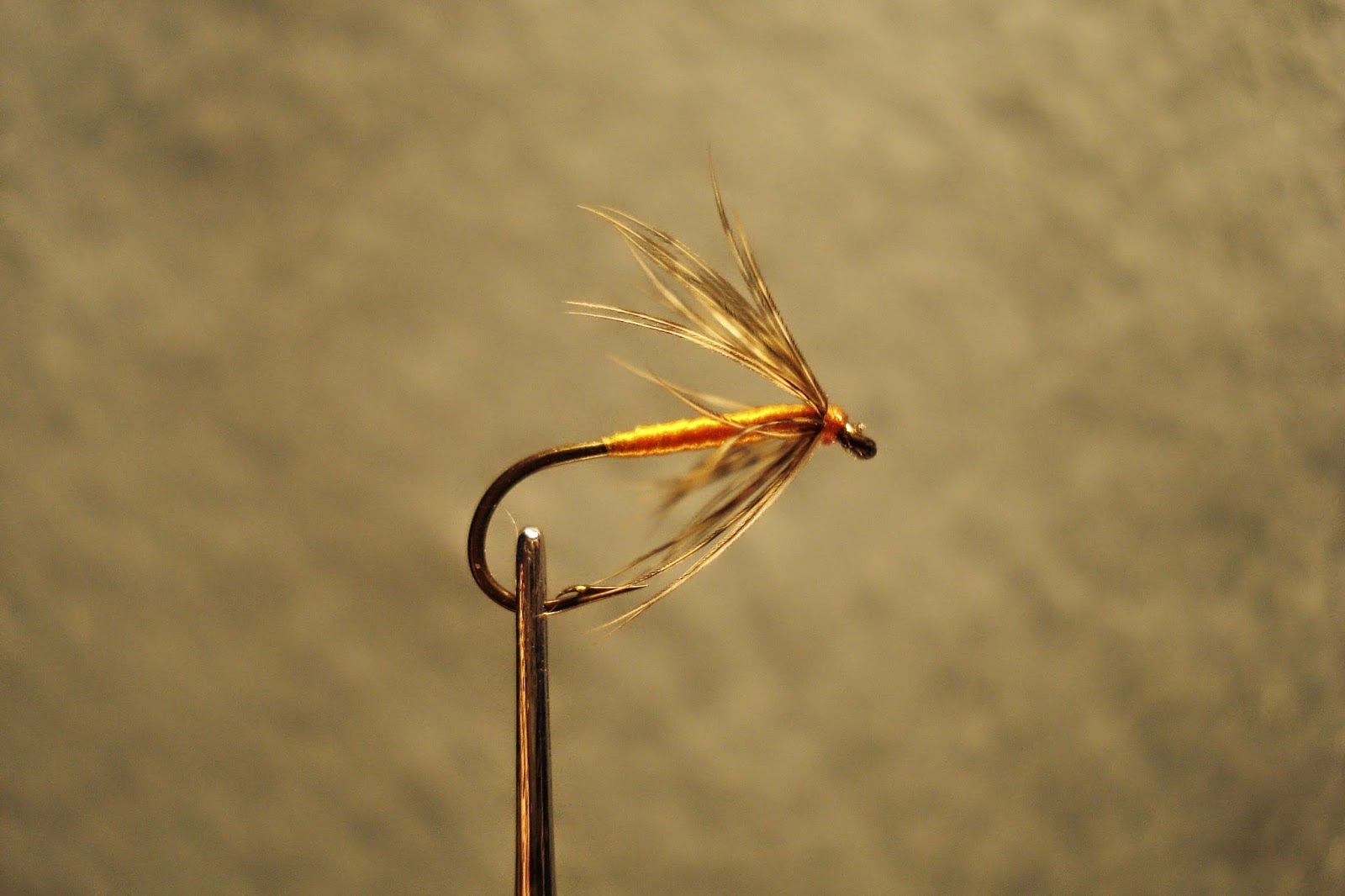 |
| This dressing of Richard Bowlker’s Fern Fly uses an American woodcock primary for the hackle. |
Hook:
|
14-18
|
|
Thread:
|
Burnt orange
|
|
Body:
|
Orange Pearsall’s marabou silk, lightly waxed
|
|
Hackle:
|
Woodcock covert
|
|
Leslie Magee traces the recurrence of popular dressings in North Country angling literature as well as the coterie publication of various North Country angling clubs from 1651—1885 in his Fly Fishing: the North Country Tradition (1994). He locates the Fern Fly or Woodcock and
Orange in at least eight angling texts: in Charles Cotton’s 1676 additions to Izaak Walton’s
Compleat Angler; James Chetham’s Angler’s Vade Mecum (1681), John
Williamson’s British Angler (1740);
in R. Brooks (1793); John Swarbrick’s List
of Wharefdale Flies (1807); George Bainbridge’s Fly-fisher’s Guide (1816); Michael Theakston’s List of Natural Flies (1853); and
William Brumfitt’s manuscript (1885).
In a book that Magee does not include, Alfred Ronalds' Fly-Fisher’s
Entomology (1836), the Fern Fly is listed as a
terrestrial, also known as the Soldier Fly. Ronalds also gives a winged dressing
and, as is his wont, a buzz or hackle dressing, a furnace palmer or heavily dressed
front hackle on an orange silk body. John Jackson, whose dressings Magee also excludes provides directions
for a winged Soldier Fly in his Practical
Fly-Fisher (1854), as does Theakston. Neither of these dressings uses
woodcock as winging or primary hackle - few of the Fern Fly dressings that Magee indicates use woodcock or orange at all.
Oddly enough, Magee does not locate the Fern Fly in
either of the Bowlkers’ editions of The
Art of Angling. In the 1753 edition, Richard Bowlker suggests dressing
the fly for mid-June through mid-July, and his dressing is the one that gives
it the name Woodcock and Orange: “He is a four-winged fly; his body very
slender and of an orange colour; he is to be fished with at any time of the
day, from sun-rise till sunset, being a very killing fly: His wings are made
with a woodcock’s feather, his body with orange-coloured silk.” His dressing seems to be a direct precedent for the Brown Fern Fly that John Kirkbride included The Northern Angler (1837), which only added a small dubbing ball thorax of hare's neck fur behind the hackle.
|
 |
| This dressing of Charles Bowlker’s Fern Fly uses turkey tail for the body, American woodcock primaries for a hackle, and orange Pearsall’s gossamer silk twisted as a ribbing. |
Richard’s son Charles dresses the Fern Fly in
his 1774 edition of The Art of Angling.
He is not as convinced of its efficacy as his father: "The Fern Fly comes in
about the latter end of June, and does not continue above a week. He has four
wings that stand upright on his back. His wings and body are made of a
woodcock’s feather, ribbed with orange coloured silk. He is to be fished with
in a morning, the first of any fly, till abot eleven o’clock, and then you
may change your fly according to the brightness or dullness of the day, for
there are many flies on the water at that time."
|
Neil, great flies. The American woodcock looks like it might make a fair substitute for golden plover.
ReplyDeleteMerry Christmas
~Steven Bird
Thanks, Steven - it's more of a concession to convenience and the availability of materials than anything else.
Delete